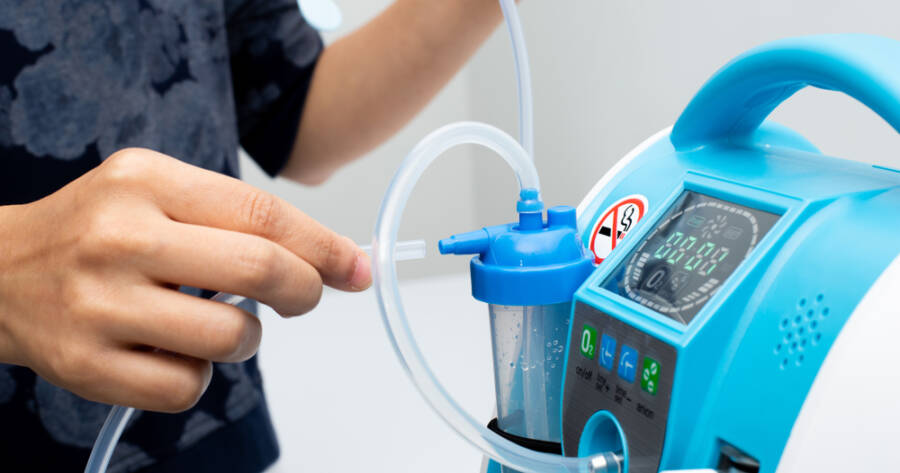Living with Chronic Obstructive Pulmonary Disease (COPD) often involves managing symptoms that affect daily activities. For many, an oxygen concentrator can help ease breathing and enhance overall well-being. However, acquiring this essential equipment can be expensive. Fortunately, Medicare may provide coverage for those who meet certain eligibility requirements. In this article, we’ll break down the process of obtaining Medicare assistance for an oxygen concentrator and offer guidance to help make it more accessible.
Understanding Oxygen Concentrators and Their Role in COPD
Oxygen concentrators are medical devices that help individuals with low oxygen levels breathe more easily. For those managing COPD, supplemental oxygen therapy can reduce breathlessness, increase stamina, and improve overall quality of life.
Unlike traditional oxygen tanks, concentrators pull air from the surrounding environment, making them more convenient for long-term use. Medicare recognizes the importance of oxygen therapy for eligible individuals, but coverage depends on specific medical and documentation requirements. Understanding these criteria can help simplify the process.
What Medicare Covers for Oxygen Therapy
Medicare offers coverage for oxygen therapy under Part B, which includes durable medical equipment (DME). This means that, if deemed medically necessary by your doctor, an oxygen concentrator may be partially or fully covered. However, certain conditions must be met for approval.
To qualify for Medicare coverage:
- Your doctor must diagnose you with a severe lung condition, such as COPD, and determine that other treatments have not provided sufficient relief.
- Your oxygen levels (determined through arterial blood gas or pulse oximetry tests) must meet Medicare’s specific medical criteria.
- You must have a detailed prescription from your doctor, specifying the type and duration of oxygen therapy required.
Even with Medicare assistance, you may still have out-of-pocket expenses, such as deductibles or co-insurance. If you have Medicaid or supplemental insurance, these additional costs may be reduced.
Steps to Obtain an Oxygen Concentrator Through Medicare
Medicare’s approval process can feel overwhelming, but following these steps can make it more manageable:
1. Visit Your Doctor
Start by scheduling an appointment with your healthcare provider. Your doctor will assess your condition, discuss your symptoms, and perform tests to determine whether oxygen therapy is necessary. Being open about your breathing difficulties and daily challenges can help support an accurate diagnosis.
2. Complete Necessary Testing
Medicare requires specific medical tests, such as blood gas analysis or pulse oximetry, to confirm your oxygen needs. These tests, conducted while at rest or during activity, measure oxygen levels in your blood and help determine eligibility.
3. Obtain a Prescription
If you meet Medicare’s criteria, your doctor will provide a prescription for oxygen therapy. This document must include important details such as the flow rate and duration of use. Ensuring the prescription meets Medicare’s guidelines is key to avoiding delays.
4. Choose an Approved Supplier
Medicare only covers oxygen concentrators obtained through approved durable medical equipment (DME) suppliers. You can use Medicare’s online directory to find authorized suppliers in your area. If you have a Medicare Advantage Plan, confirm that your supplier is in-network.
5. Understand Your Costs
Even with Medicare coverage, some costs may apply. Ask for a clear breakdown of expenses, including co-insurance and rental fees, so you can prepare financially.
Tips for a Smoother Application Process
Getting an oxygen concentrator through Medicare can take time, but these tips can help prevent delays:
- Keep organized records – Save copies of prescriptions, test results, and any communications with Medicare or suppliers in case you need to reference them later.
- Follow up regularly – Check on the status of your request to ensure there are no unexpected delays.
- Explore alternatives – If your request is denied, you have the right to appeal. Additionally, some nonprofit organizations and manufacturers offer financial assistance programs.
Alternatives If Medicare Coverage Isn’t Available
If you don’t qualify for Medicare assistance, there are other options to explore:
- Medicaid – Those with limited income may be eligible for Medicaid, which sometimes covers oxygen therapy costs.
- Financial aid programs – Various nonprofit organizations provide assistance to those who cannot afford medical equipment.
- Out-of-pocket purchase – If buying an oxygen concentrator is an option, many suppliers offer flexible payment plans.
Exploring these alternatives can help ensure you receive the oxygen therapy you need, even if Medicare doesn’t cover it.
Take the Next Step Today!
Securing a Medicare-covered oxygen concentrator for COPD requires careful preparation, documentation, and adherence to specific guidelines. By working closely with your doctor, completing necessary medical tests, and selecting an approved supplier, you can increase your chances of obtaining coverage.
If you don’t qualify, alternative resources are available to help you access the equipment you need. Taking proactive steps today can lead to easier breathing and an improved quality of life.

